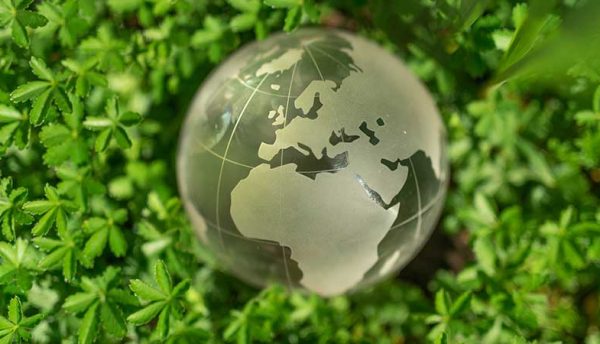Achieving sustainable status when it comes to running a data centre is a top priority across the industry. Astrid Wynne, Techbuyer Sustainability Lead, discusses the various ways in which data centre leaders can drive change and ensure green operations.
Data centres are the engine rooms of the digital revolution and servers are the heavy machinery. With the conversation on sustainability moving beyond energy efficiency into embodied energy savings and Circular Economy approaches, finding the sweet spot of optimising electricity usage and reducing IT waste is the goal. A server refresh can massively improve the carbon footprint of energy use, but the materials needed for this are a finite resource. So, how can we balance the two?
Servers, storage and networking are environmentally expensive to produce. Servers consist of around 40% steel, 11% aluminium and 3% plastics according to an article published in the Journal of Industrial Ecology. Research by Nottingham Trent University, the University of Bath and University of Leeds says the production of these three materials are among the top five worst offenders for industrial greenhouse gas emissions worldwide, and account for 32% of global output between them.
Greenhouse gas emissions are not the only negative side effect of IT infrastructure production. The large amount of wastewater generated by mining and manufacturing contributes to the scarcity of fresh water worldwide. Leach residue created when gold and copper are mined and refined gives off by-products known as sulphidic tailings. When these are destroyed, toxic chemicals are released into the atmosphere that have been linked to cardiovascular disease (CVD) and cancer.
In addition, six of the 27 Critical Raw Materials (CRM) – identified by the EU as either in short supply or whose source is potentially vulnerable to political change – are present in IT equipment. These include Cobalt, Palladium, Tungsten, Antimony, Bismuth, Neodymium and Tantalum. Alongside other materials present in IT hardware like copper, these materials are also in high demand in other ‘green’ sectors such as renewable energy infrastructure. Scarcity is already resulting in huge price rises on these commodities. The problem is made worse by the fact that many of them are predicted to run out in decades.
The materials in electronic equipment are present in trace amounts, amalgams and coatings, making them practically impossible to recover with mainstream recycling technology. Although more efficient processes are on the horizon – such as bioleaching and pyrolysis – these are in the early stages. In general, recyclers are currently more focused on other valuable assets such as gold, silver and other metals. Aside from this, there are other production expenses that are impossible to recoup, such as the carbon cost of steel manufacture or the fresh water that has now been contaminated.
These issues are discussed a lot within the data centre, not least by the Interreg NW funded CEDaCI project, which includes many DCA members. In March, the project celebrated an additional €1.245 million grant to chart a path towards Circular Economy in three additional countries. Encompassing every stage of the life cycle – from circular design to optimised CRM recovery – the partnership of academics and industry experts agrees that reuse and refurbishment is the best value proposition for current IT hardware. It will also buy time to optimise design and material recovery.
This comes as the world wakes up to the problem of electronic waste and takes steps to address it. With Joe Biden backing the Right to Repair movement in the USA and similar legislation promised in the UK, the mainstream press is full of stories on the environmental and social benefits of repair, refurbishment and reuse of all electronic items.
In August 2021, the Guardian ran a story on the economic value of reuse. According to the Green Alliance thinktank, the repair and reuse of manufactured goods could generate 450,000 jobs over 15 years and halve UK resource use by 2050. Run against the backdrop of continuing chip shortages halting production in the car sector in July, the case for reuse becomes a necessity and not just a nice to have.
Some might question how valid reuse is within the data centre environment. We all know that much of the equipment removed from high-end data centres is not yet at the end of life and can be used elsewhere. Older equipment can be donated or sold to organisations with lower compute needs, such as schools and SMEs. However, we are now also waking up to the idea that equipment can be reconfigured and reused within high performance data centres too.
We recently published a paper in the IEEE Transactions on Sustainable Computing titled Optimizing server refresh cycles: The case for circular economy with an aging Moore’s Law. Co-authored by Techbuyer and the University of East London, it demonstrates that the immediate past generation can out-perform the latest on power consumption and Return on Investment (RoI). It also proves there is no difference between like for like new and refurbished servers and components. This goes some way to explaining the approach of some hyperscalers. Google happily and publicly states that 75% of components in its spares programme and 52% in its machine upgrades programme are refurbished components.
Pulling this apart for enterprise servers interested us and we used the research to build a Machine Learning tool delivered by a sister company called Interact. This analyses energy usage within a data centre and offers hardware suggestions to increase efficiency, decrease carbon usage and optimise costs. Since its launch in January, it is finding that many of the best solutions for energy use over time are refurbished, immediate past generation machines.
The reason for this is that Moore’s Law on CPU efficiency increases is slowing down (and getting worse in low power mode, which is where servers spend a large amount of their time). Rather than refreshing to new, operators can upgrade memory and storage on the previous generation and get better results for a lower price. This may not be true in the future as new CPU technology is developed, but it is certainly true now. Which means the biggest lesson here is to analyse what you have, optimise this and keep up with the process regularly to check your homework.
Taking this to market, however, we are finding that there are significant logistical challenges to implementing this. For FinTech or colocation providers, for example, the purchase decisions on IT hardware are made by one group and the energy bill paid by another. It means that although there are significant savings when you look at life cycle costing, the financials are set up to ignore this, as is carbon reporting. If we are going to drive change, we need to look at the whole ecosystem.
The good news is that in doing this, data centres can achieve cost and environmental benefits as well as cashing in on the excellent PR of reducing electronic waste and delivering a green product. The sector already has a great story to tell. Data centres can facilitate communication without travel miles, develop the wherewithal for smart manufacturing and predict weather patterns to optimise energy usage. Optimising this means extending product life for as long as possible, not just accepting reuse, refurbishment and remanufacture, but designing for it. This means developing tools that optimise IT equipment over time but also designing systems that measure efficiencies across the whole value chain.
Click below to share this article




